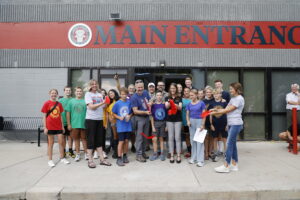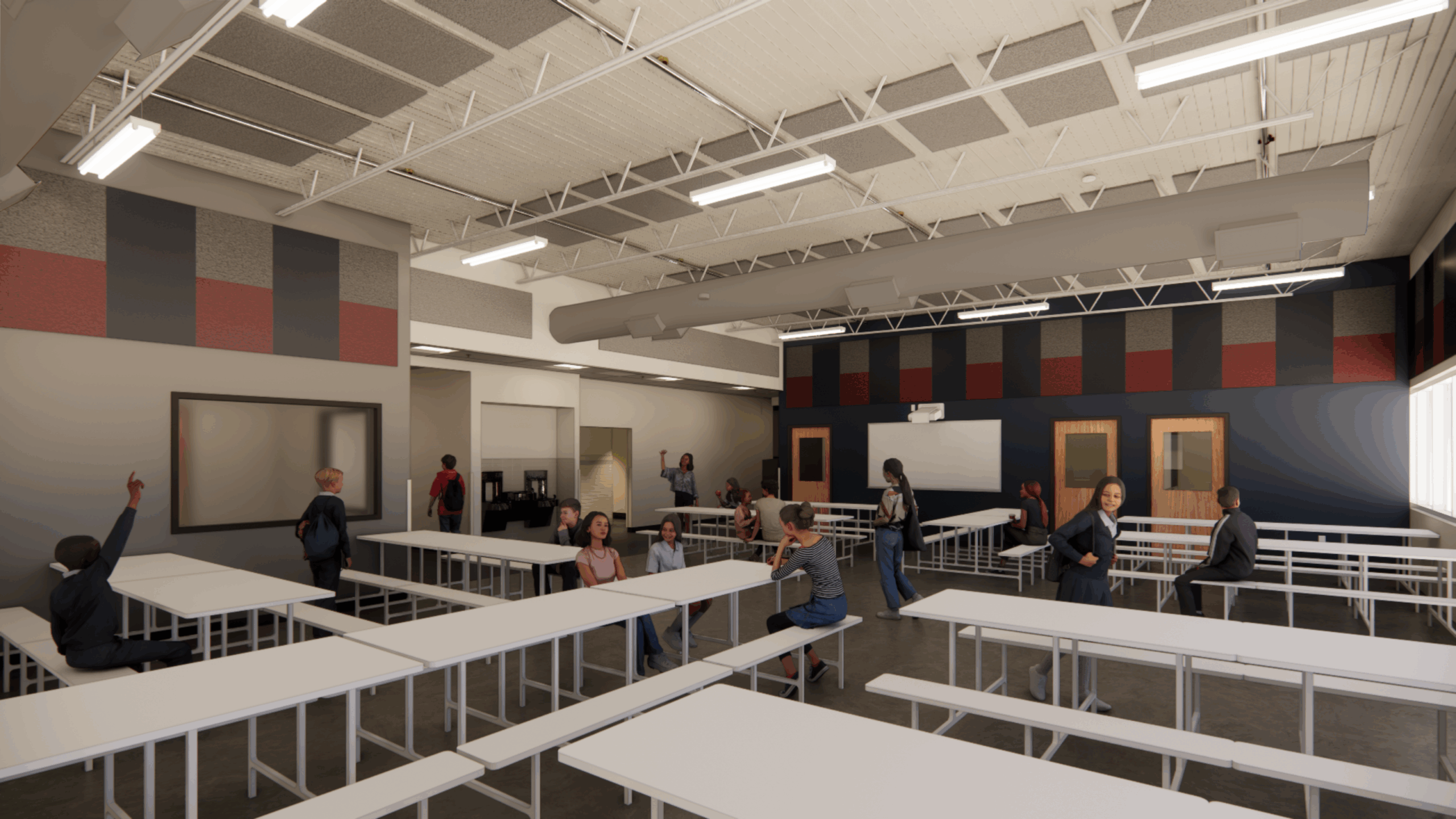Photo: Strategic overlap in the design and construction process allowed the Liberty Common School project team to deliver the first phase in just 10 months. | Photo Credit (all): Courtesy of Neenan Archistruction
By Shelby Hinchliff

In Fort Collins, Colo., what was once a dated 1980s office park is now a thriving junior high school campus: Liberty Common School. This ambitious adaptive reuse project exemplifies the opportunities of adaptive reuse and shines a light on how we can reimagine spaces to evolve as the community needs them to.
Designed with flexibility, efficiency and student well-being at the forefront, phase one of the new campus officially opened for the 2025-2026 school year. The full school will be completed in time for the 2026-2027 school year.
For Liberty Common, a charter-public school focused on a classical, core knowledge-based curriculum, the project offered an opportunity to give junior high students a space uniquely tailored to their needs without the cost or timeline of new construction. The facility’s location further bolsters the school’s historic role closing achievement gaps for its district’s low-income and minority students, for which Liberty Common School has achieved national recognition.
“We needed a space that would not limit our growth. Having a regulation sized gym, consolidated classroom spaces and a space to support performances and presentations elevates the experience of our students,” said Kathleen Kearney, Liberty Common Junior High School principal and project manager. “Transforming an outdated office building into a fully functional school campus takes a great deal of planning and coordination, but we are so proud of the final product. It was a rewarding experience to revitalize a space in Fort Collins rather than let it go to waste.”
Reimagining space through adaptive reuse
Originally built as part of a suburban office park, the site presented clear challenges and unique potential. With flat, ribbon-windowed architecture typical of its era, the buildings were far from school-ready. But by reconfiguring the interiors, adding a connective structure between them, and completely reworking the site layout, the design team created a secure, efficient and inspiring learning environment.
The two existing buildings will house classrooms and administrative areas. A new addition, referred to as the “loggia” in a nod to Roman architectural tradition — will connect the structures and includes a regulation-sized gymnasium, multi-use cafeteria and a space to host concerts, musical-theater practice and presentations.
Parking areas will be replaced with green space, providing outdoor learning and recreation areas while supporting critical stormwater rerouting infrastructure.
Fast-tracked timeline and phased construction
Charter school construction typically requires 14-15 months for permitting, design and buildout. But strategic overlap in the design and construction process, along with a highly collaborative approach, allowed the team to deliver the project’s first phase in just 10 months, from design start to occupancy.
Phased approaches are beneficial to many different spaces, but especially critical for schools. In order to prevent any academic disruptions, Neenan and Liberty Common completed phase one, 19,000 square-feet of academic classrooms and administrative areas, in time for the 2025 school year. Phase two will include a second building, loggia, gymnasium, support spaces, specialty classrooms and site work.
With critical areas of the school fully operational, Neenan is working in lockstep with the school to coordinate daily activities. This high caliber of collaboration is needed to ensure student safety in the areas adjacent to an active construction site.
Navigating complexity with collaboration

Converting the office park into a school wasn’t just a matter of design. It also required navigating multiple layers of local and state approval. The teams worked with the City of Fort Collins to remove a public street between the two buildings, reroute stormwater systems and reconfigure vehicle access and parking.
The project remained on schedule thanks to close coordination among Neenan, the school, the city and the owner’s representative, Jeff Jensen.
“Because we’ve worked with Liberty for years, we were able to help them quickly weigh their options, support the financing package and push through approvals efficiently,” said Bill Pigg, president of Neenan Archistruction. “This project is a perfect example of how design-build can accelerate delivery without sacrificing quality.”
Planning with purpose
Prior to selecting the site, Liberty Common considered multiple options, including a ground-up build and adaptive reuse of other properties.
Site selection is a critical component of setting up an adaptive reuse project for success. It is necessary to conduct a comprehensive evaluation. Ultimately, Liberty Common selected this site based on proximity to existing campuses, cost efficiency and design flexibility. Neenan supported the funding agreement by helping the school develop its financing package and understand the full lifecycle value of the adaptive reuse model.
Liberty Common School was an opportunity to translate the school’s classical academic philosophy into its physical environment. Architects worked to incorporate traditional design references while optimizing the functionality of a modern school. Classrooms were built with adaptability in mind, supporting future growth.
A model for charter school innovation
The Liberty Common Junior High stands as a proof-of-concept for adaptive reuse in K-12 education. This is especially impressive within the charter sector, where limited budgets and tight timelines are common.
By leveraging Neenan’s integrated design-build model, strong municipal relationships and deep understanding of charter regulations, Liberty Common gained a cost-effective, future-ready campus in record time.
Shelby Hinchliff is a Principal Architect at Neenan Archistruction.


